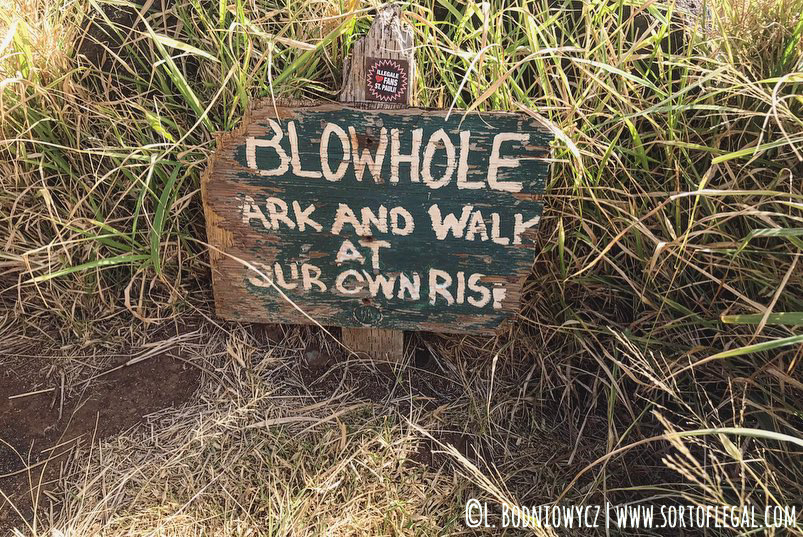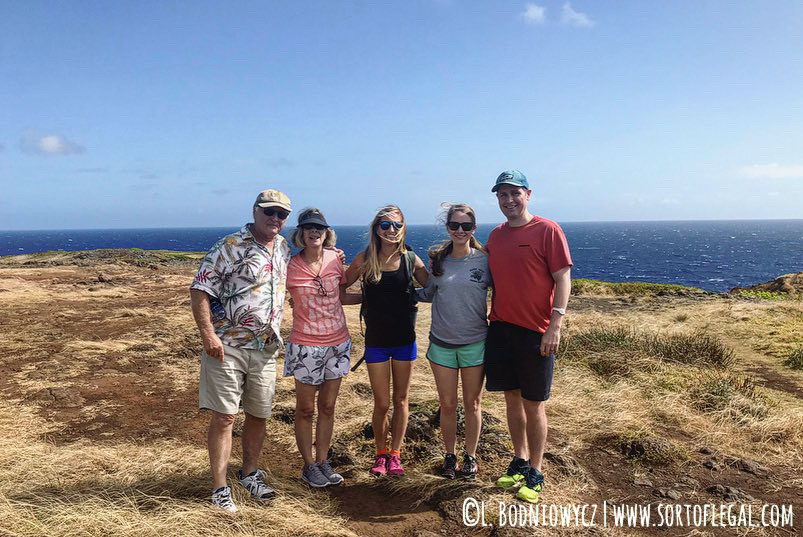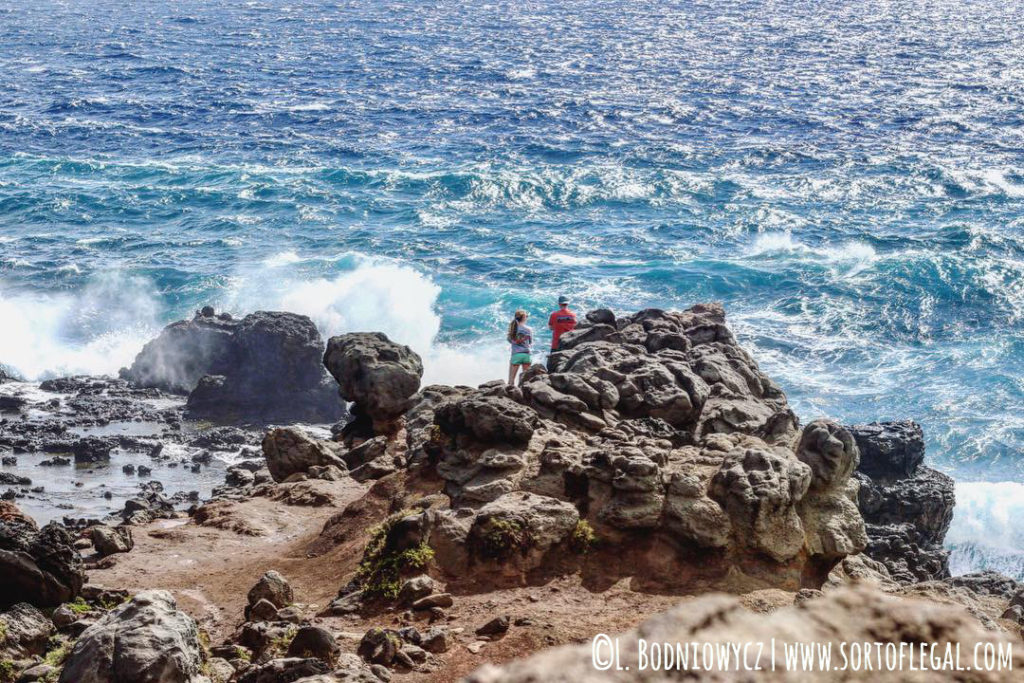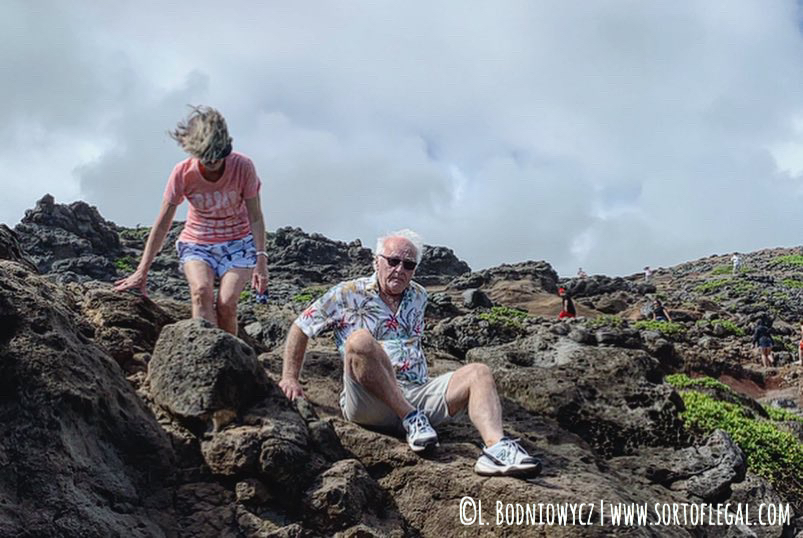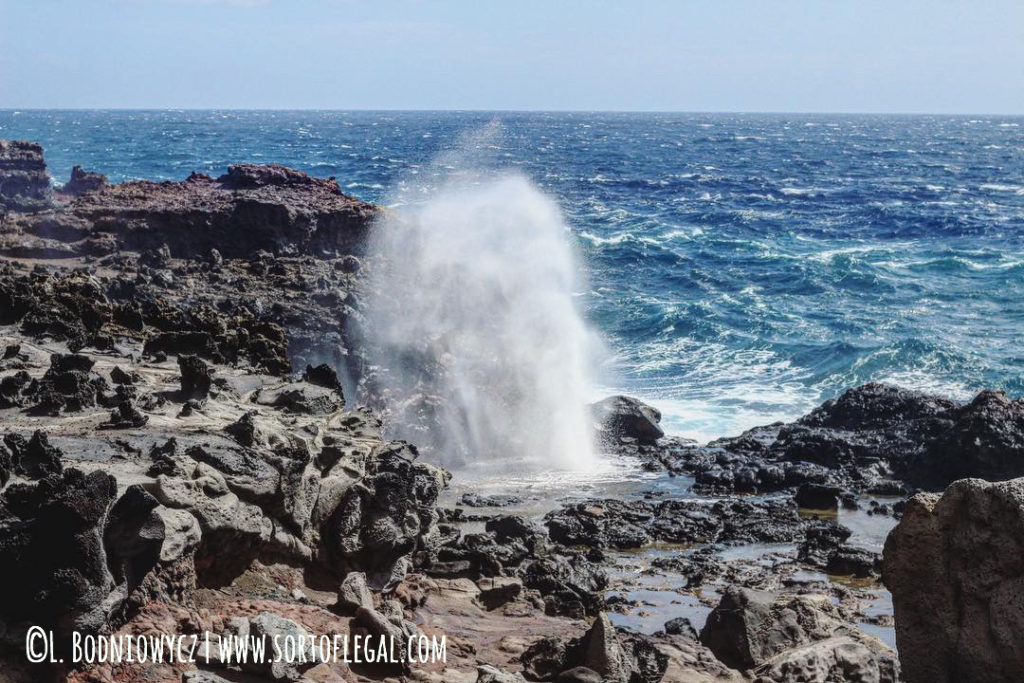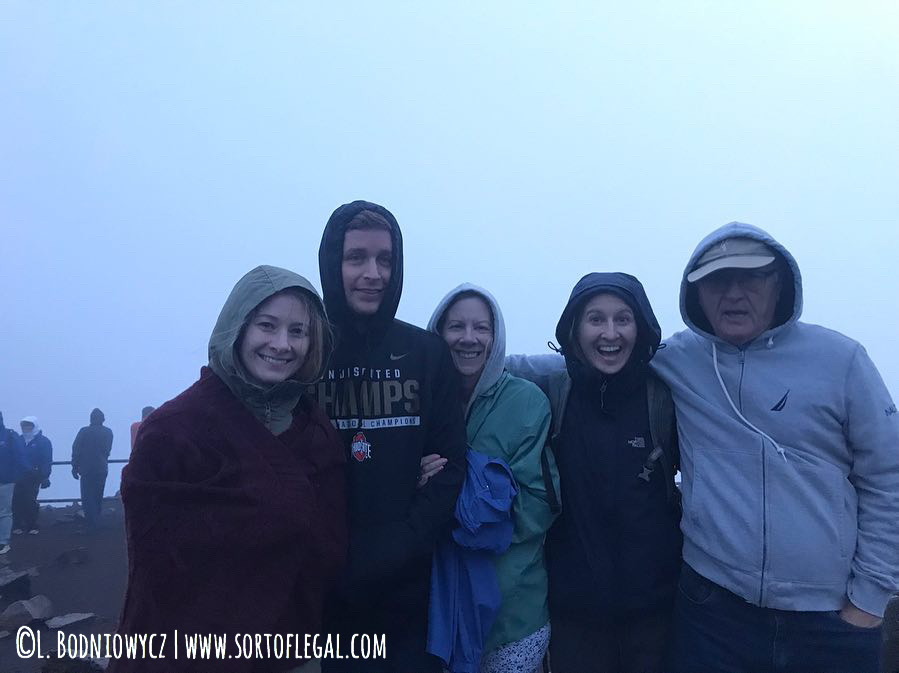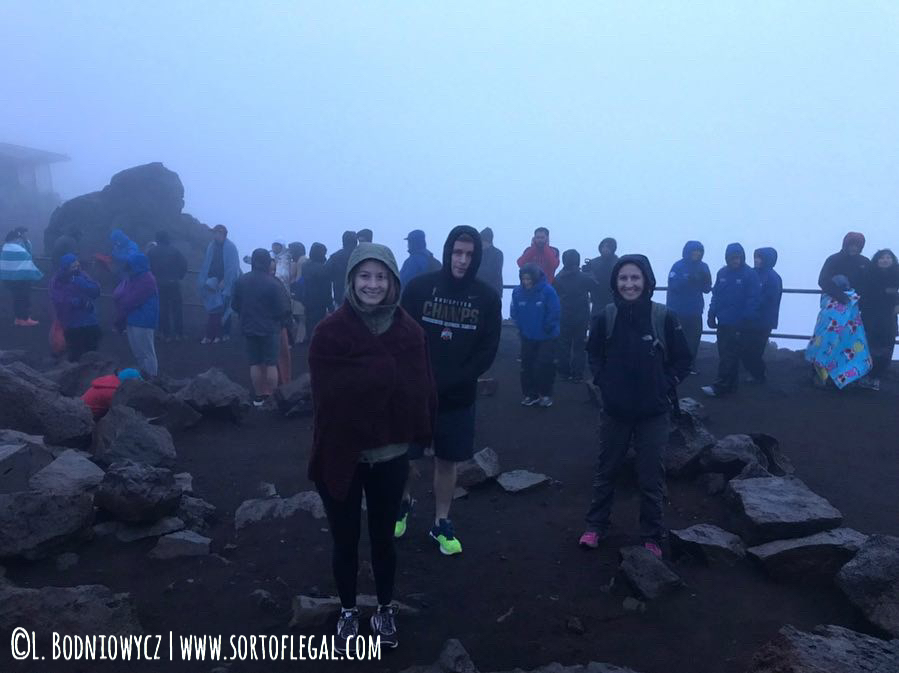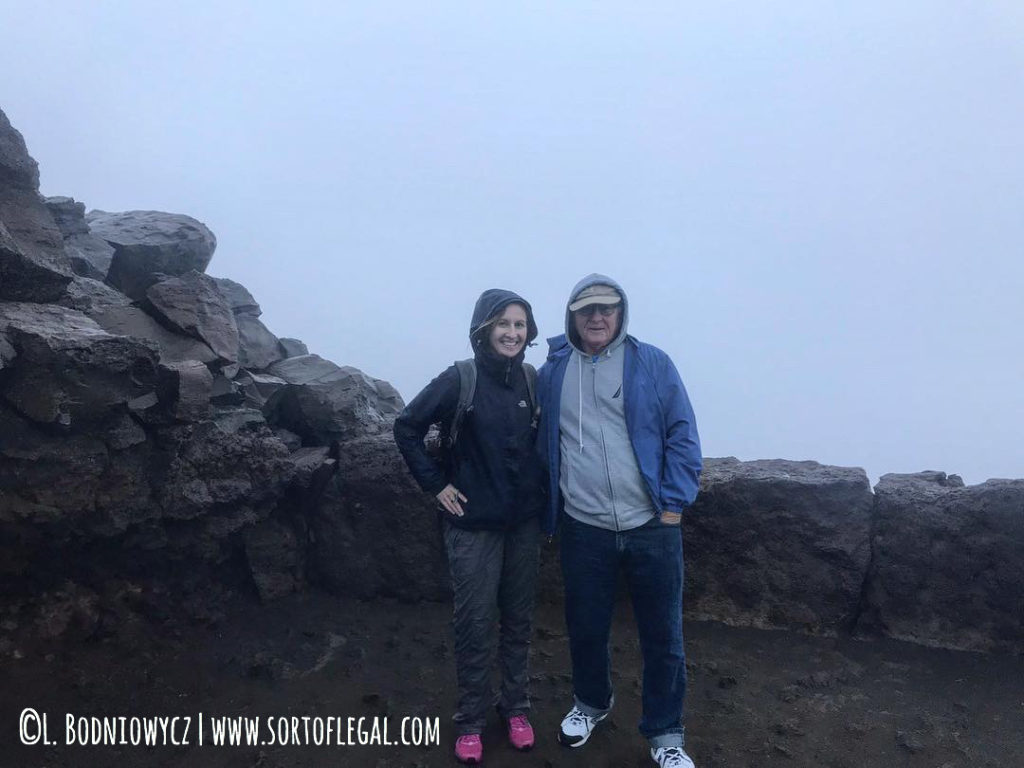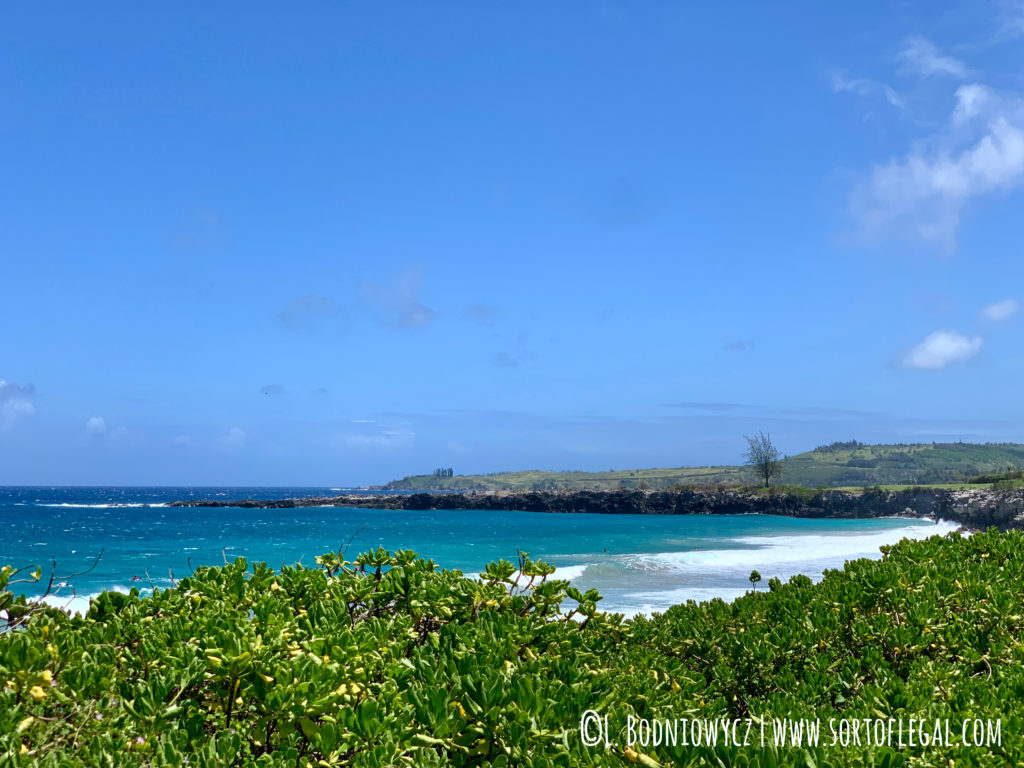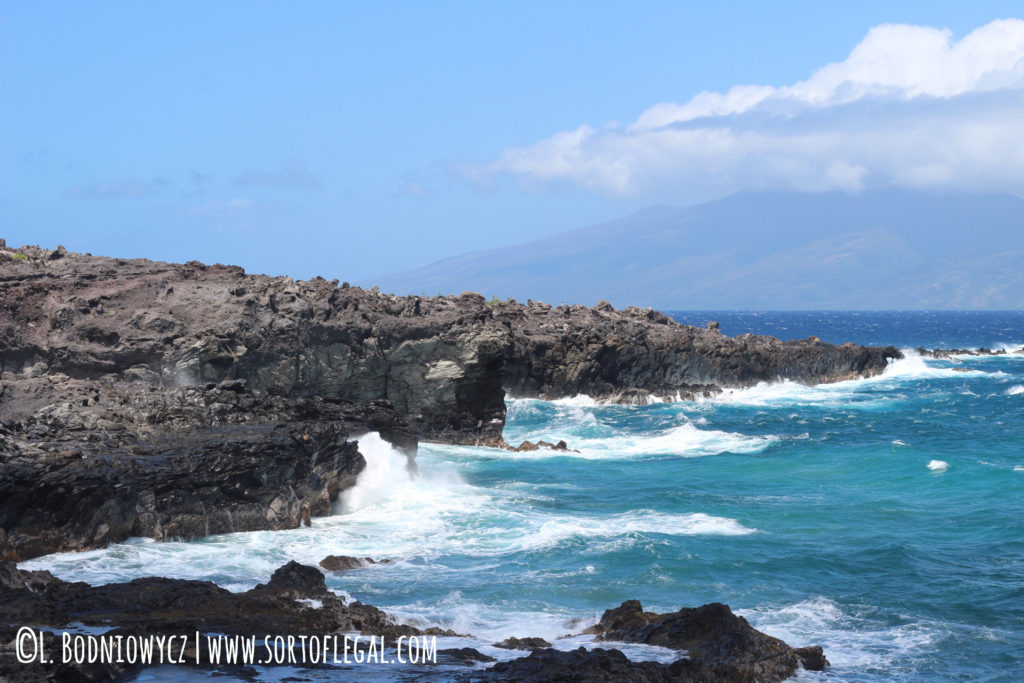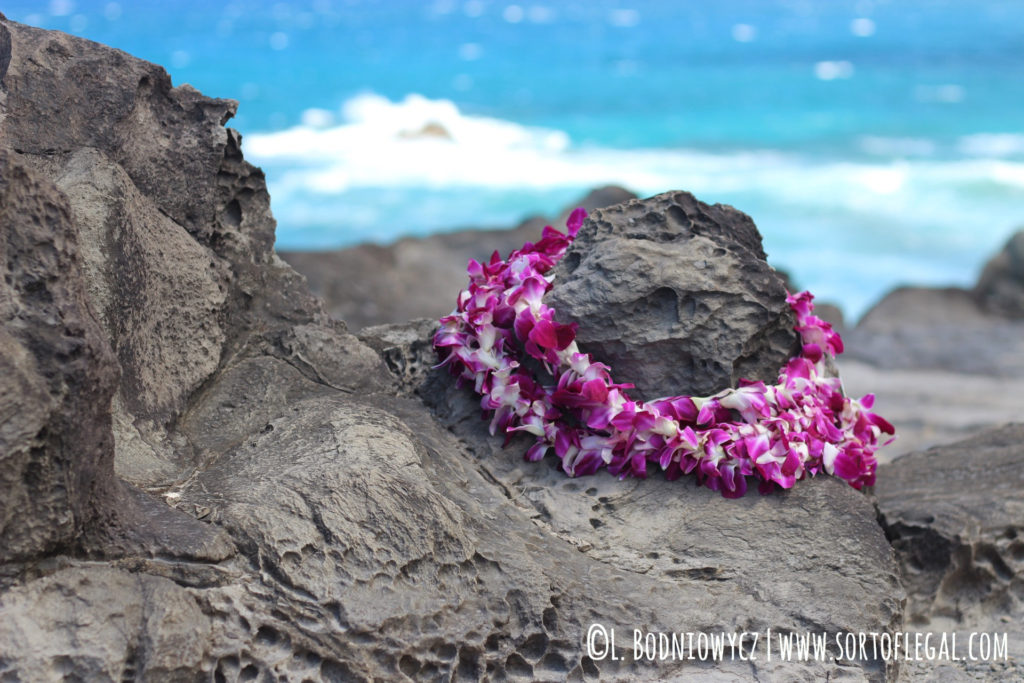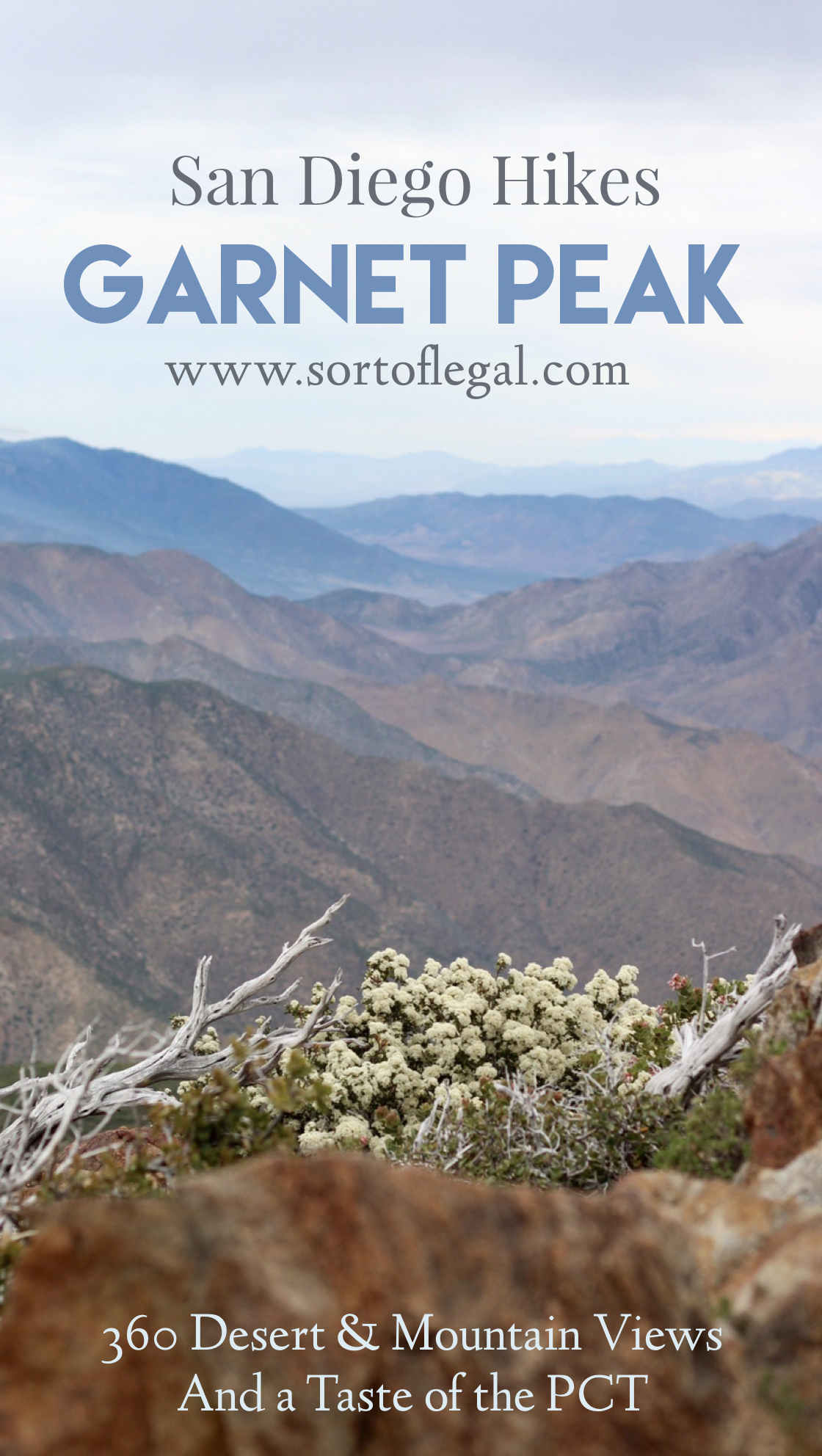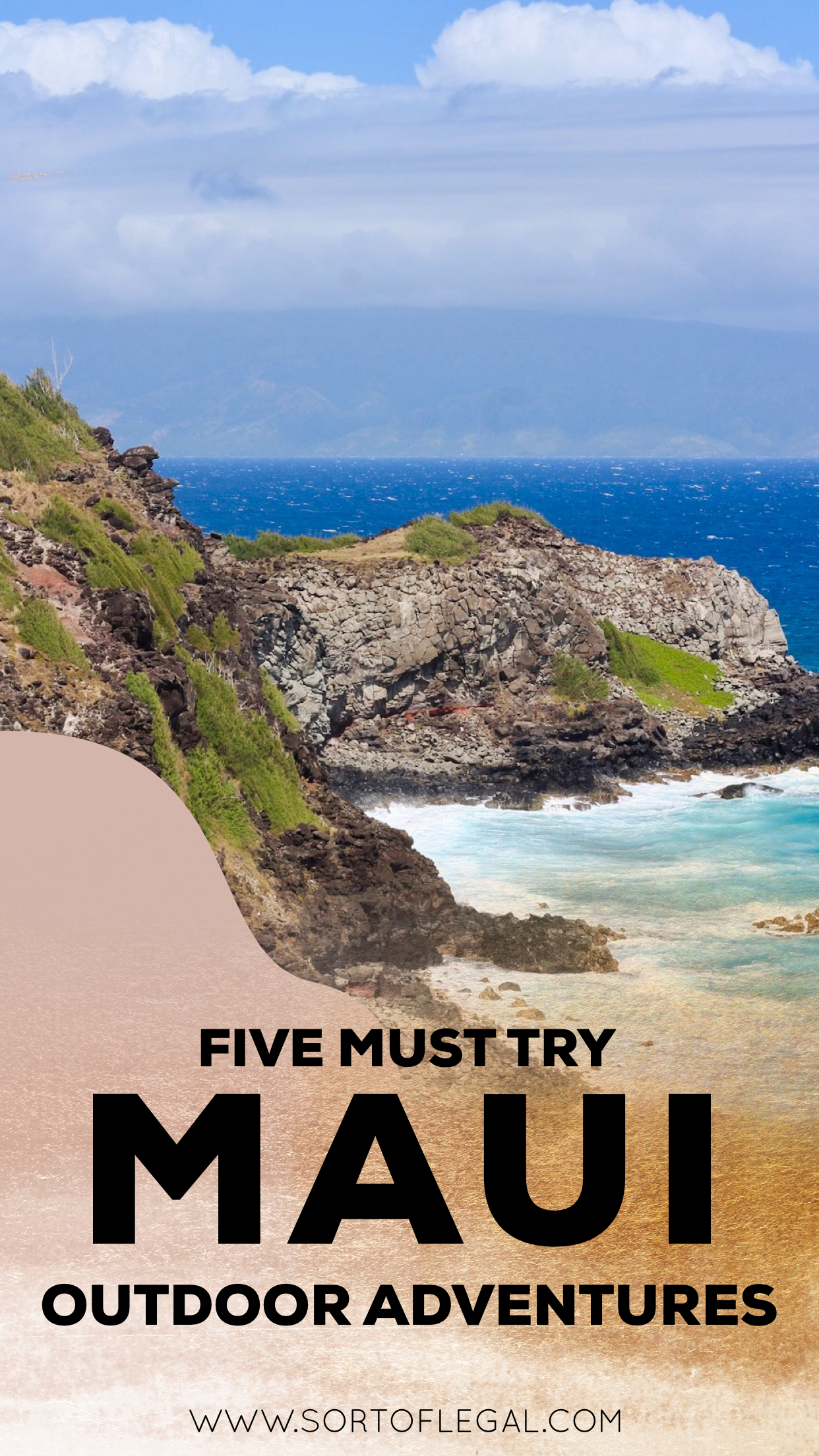
5 Maui, Hawaii Outdoor Adventures Our Whole Family Loved & You Will Too
The five of us on our family Maui, Hawaii trip ranged in ages from 32 to 69 with an equally wide range in fitness levels and enthusiasm for outdoor adventures. Yet, we all enjoyed and could physically handle these family friendly outdoor activities: the Nakalele Blow Hole, Snorkeling, Haleakala National Park, Twin Falls, and the Kapalua Coastal Trail.
No. 1: NAKALELE BLOW HOLE
Poelua Bay HI 96793, Wailuku, Hawaii 96793 USA
The Nakalele Blow Hole is a blow hole, a hole in oceanfront lava rock. When sufficiently strong waves (and most of them are) smack into the rock, water gets pushed into the hole and it shoots into the air like a volcano…a volcano of water.
Even without the blowhole, the spot would be worth checking out for its space-like lava rocks that are described as looking like an “acid war zone,” stunning oceanside cliffs getting battered by turquoise water would be worth checking out. There’s also a heart shaped rock at the location that has become Insta famous.
Signs humorously but accurately warn that the blowhole “is not a waterpark.” The ocean and blowhole are powerful and can be fickle – multiple fatalities at the Nakelele Blow Hole have occurred. Don’t be scared, do be cautious.
Physical Requirements:
You can see the blowhole from pretty far away which requires minimal walking and getting down a few rocks. To get down closer is less than a mile round trip, but you do have to scramble down volcanic rock.
My parents both did it and just took their time on the way down. My mom did have a little spill where resulting in a small bruise and cut (Stuff like that is why I like carrying this mini first aid kit– you never know!). Her quads were sore the next day. There were a number of families with children around 5 – 10 years old who seemed to navigate the location without incident.
How to Get to the Nakalele Blowhole:
The Nakelele Blow Hole is located at Poelua Bay. It will show up if you search for it via Google Maps (Google Maps link) or Apple Maps. Navigating from the western, resort side (Kaanapali, Lahaina, Kapalua, etc) of the island is pretty easy as you’re on the same road most of the way. From the other direction, there is a very dangerous stretch of road on the most direct route, or you can go around past the western resort towns.
You may lose service on the way so be sure to take some actions to ensure you can get there if that happens. You can screenshot or write down directions or open your phone’s navigation system while you still have service (you won’t get directions but you’ll still be able to track your car’s movements via GPS).
Tips for Visiting the Nakalele Blowhole:
- Do not hang out on wet rocks. If the rocks are wet, you are at risk!
- Do not go near the blowhole or play in the tide pools near it.
- The lava rock is sharp! I had an instant small cut on my knee just from kneeling to take a photograph.
- Go early in the day. We arrived around 9:30AM to just a few others, but the number of people had increased quite a bit by the time we left.
Helpful Links for Planning:
- https://www.hawaii.com/maui/attractions/nakalele-blowhole/
- http://mauiguidebook.com/adventures/nakalele-blowhole/
No. 2: SNORKELING
Maui is the Hawaiian island best suited for snorkeling. There are no shortage of companies offering snorkel trips. I have heard from reliable sources that trips to Molikini Crater(only accessible by boat) and Turtle Town(accessible by boat or walking) are incredible snorkeling trips.
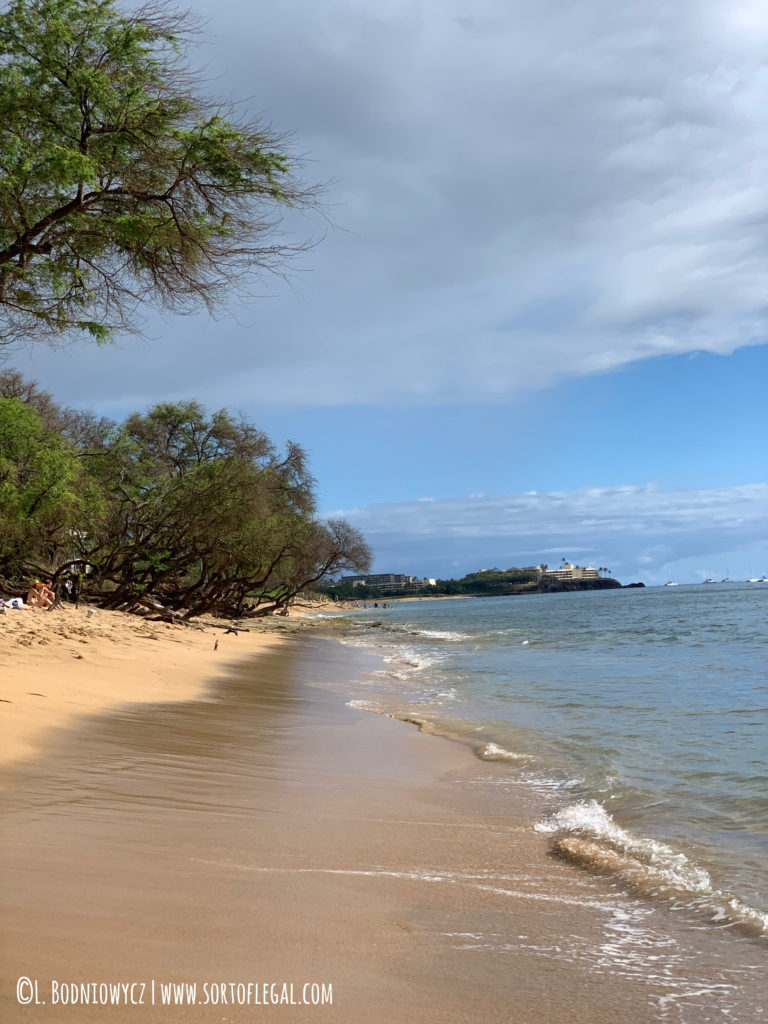
Rather than dedicate a half or full day to snorkeling, we rented snorkels from a local store and snorkeled at beaches we could walk to from Hanua Kai resortwhere we stayed. There were tons of fish! And my mom and sister who opted out were happy to hand on the beach while others snorkeled.
Physical Requirements:
To safely snorkel, particularly if you go without a tour like we did, you need to be comfortable swimming and floating for an extended period of time. Anyone in your family snorkeling should also know basic ocean safety like what to do if caught in a rip current.
Flippers help with buoyance and you can use a pool noodle (allows you to go deep under and return) or life vest (you’ll have to stay on the surface) to increase safety but none of these things are a substitute for being able to swim.
Tips for Snorkeling in Maui:
- Go early or later in the day, the winds tend to be lower so you can see more.
- Research what spots to go to. Safe, beautiful snorkeling areas can be very close to dangerous waters. Make sure you consider the source – local snorkel rental agents will know more than someone who has been in Maui for a day.
- Heed warning signs. If a sign says an area is dangerous, it is.
- Look for other snorkelers. Usually a sign that the area is safe and there are things to see.
- Rent at a store off the resort – prices are usually cheaper and you can usually get a good deal on a full week rental.
Helpful Links for Planning:
Hawaii Snorkeling Guide: Maui
Snorkeling Report: Snorkeling Turtle Town, Maui, Hawaii
Trip Advisor: Snorkeling Molikini Crater
Hulaland: Best Maui Snorkeling Spots
No. 3: HALEAKALĀ NATIONAL PARK
Haleakala Hwy, Kula, Hawaii, 96790 USA
THE thing to do at Haleakala is to watch the sunrise from the summit at about 10,000 feet. For most, getting there requires waking up at unnatural times like 3AM to make an approximately 2.5 hour drive to the summit. (Tip: Travelers from mainland US should schedule this for early in the trip before adjusting to the time change. 3AM won’t feel as early.)
On a good day, the above cloud sunrise views are supposed to be magical – a photographer we met said it looks like fire red melting lava at its best. On the day we went, it looked like…nothing. We had windy, misty, thirty-degree weather with minimal visibility of anything let alone the sunrise. It felt like a moon, which ended up being a fun/comical experience in itself.
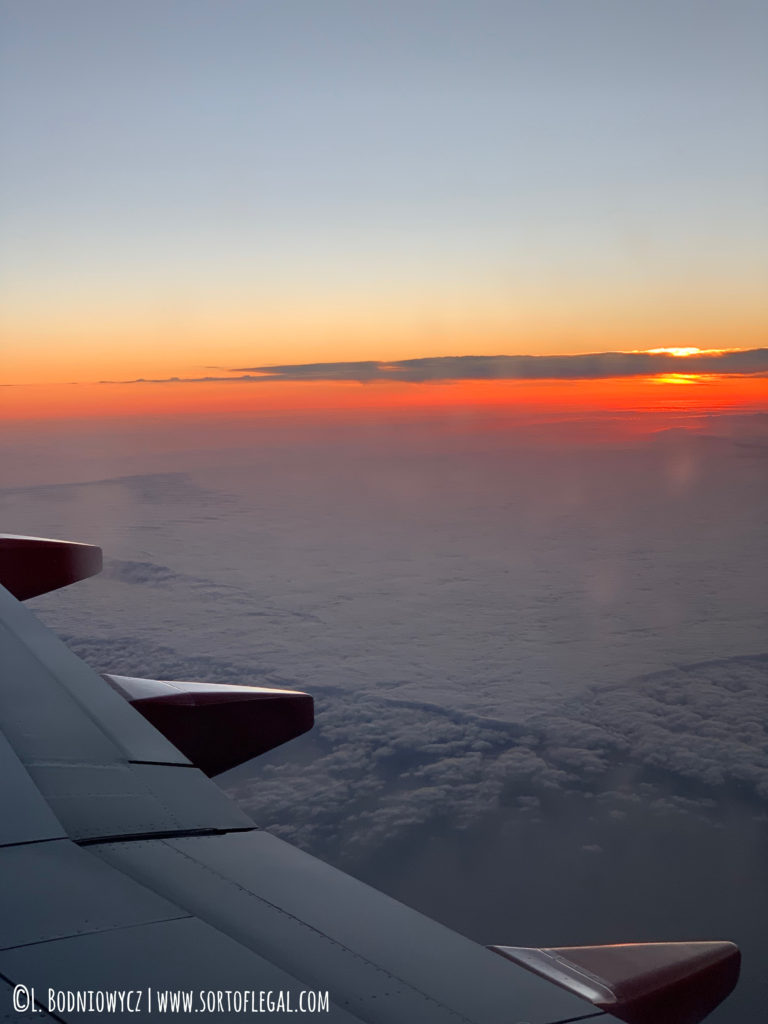
There are a number of viewpoints other than the summit and other hikes in or near Haleakala National Park. Since not everyone likes hiking in crappy weather as much as I do (see this post), we opted out of stopping on our way down and headed to Makawao, a Hawaiian cowboy town to kill some time before our O’o Farm Lunch Tour.
Adventurous spirits can bike ride over 25 miles down Haleakala and through nearby towns. You can rent your own bike but most go with a tour company which makes it safer because you’ll have a guide and large groups of cyclists are easier for cars to spot and avoid. I’ve also heard that sunset in the park is underrated.
How to Get to Haleakala National Park:
Navigate to Haleakala National Park Summit Entrance (Google map link) then you’ll lose service, but you just follow the road-up. Note any viewpoints you want to stop at on the way down.
Tips for Visiting Haleakala National Park:
- If you want to go for sunrise, you need to reserve a spot online through the National Park Service up to 60 days ahead of time. The reservation cost is $1.50 USD per vehicle.
- There is a charge for getting into the park – typically, $25 per vehicle with some variation for seniors, military, etc. This is in addition to the sunrise permit cost.
- Plan for two visits if you really want to see a beautiful sunrise. As a I learned after our “sunrise,” experience multiple people shared their similar Haleakala “sunrise” experiences to ours.
- There are bathrooms at the summit, you’ll likely need them after the road trip to get there.
- Bike companies can no longer take guided tours to the summit. You’ll still get beautiful sunrise views on the tours just not from the tippy-top looking out over the crater. If you’re dead set on biking and seeing sunrise from the summit, you can rent your own bike.
- Respect the Hawaiian that does a chant at sunrise – stay quiet and keep your phones away for a few minutes.
- The person that reserves the sunset permit will need to present their identification at the park entrance.
Helpful Links for Planning:
Haleakala National Park Website (official site, where you reserve your sunset spot)
All Trails: Hikes at or Near Haleakala
No. 4: TWIN FALLS
6300 Hana Hwy, Haiku, Hawaii 96708 USA
Twin Falls is a set of waterfalls that constitutes the first stop on the famous Road to Hana. There’s a lower set of falls accessible with less than a mile of walking and an upper set of falls that requires a water crossing IF the water is crossable at the time – a big IF given the area’s annual rainfall. You can also jump into one of the lower falls IF there is enough water, but it’s not flowing too quickly.
We stuck to the lower falls because of safety, family athletic abilities, and how confusing it is to figure out the correct crossing for the upper falls (we weren’t trying to do it, but did keep an eye out, curious about where people did cross.) I loved it! It’s not a hard workout but any means, but it is stunning. It feels like a Disney version of an outdoor wonderland except its real. There are some small side trails where you can walk down, trees to climb, and bamboo to handstand in front of.

Honey, I shrunk the kids! 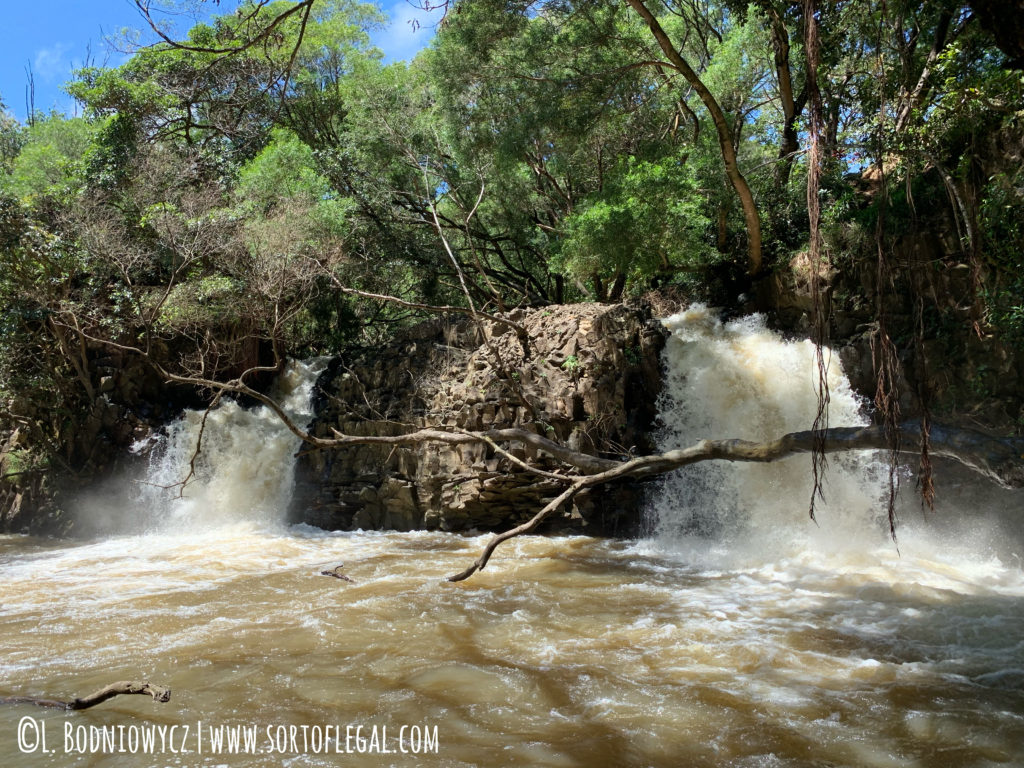
Twinning! 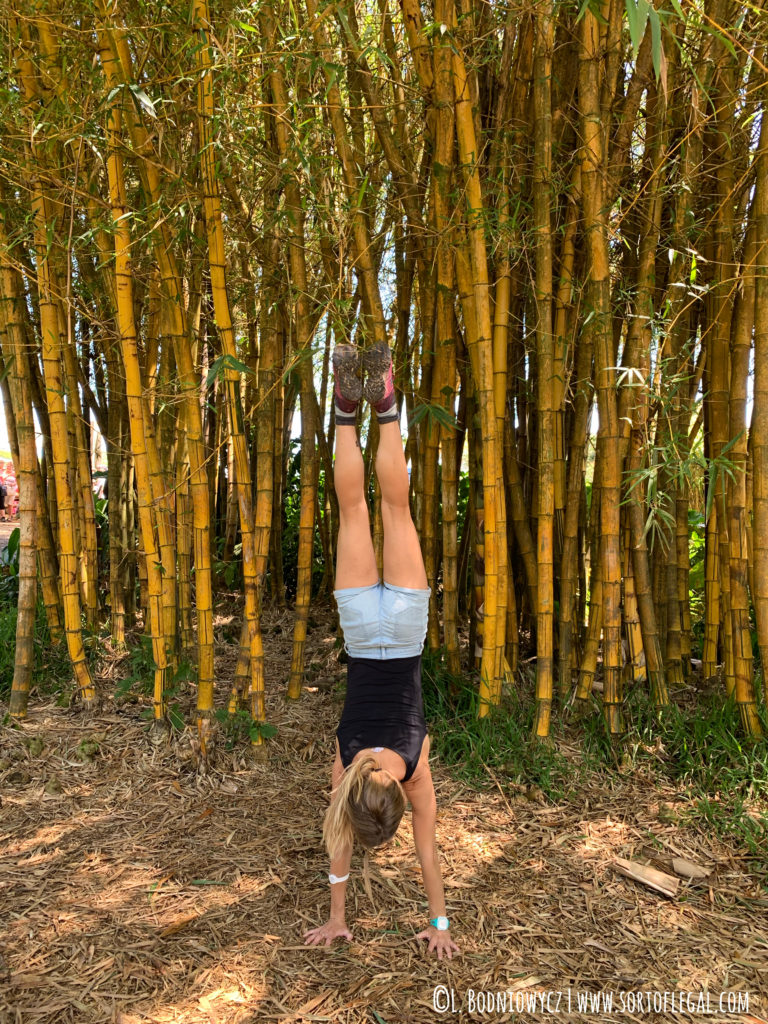
1st Time Handstanding in Hawaii 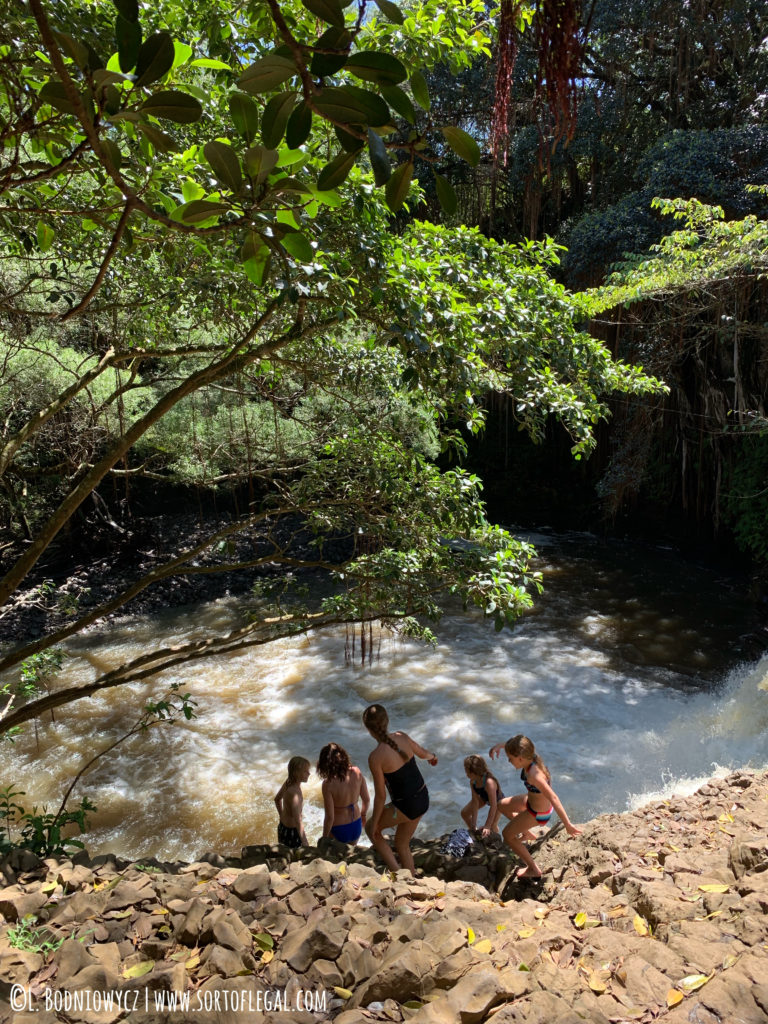
This brave family jumped! We did not. 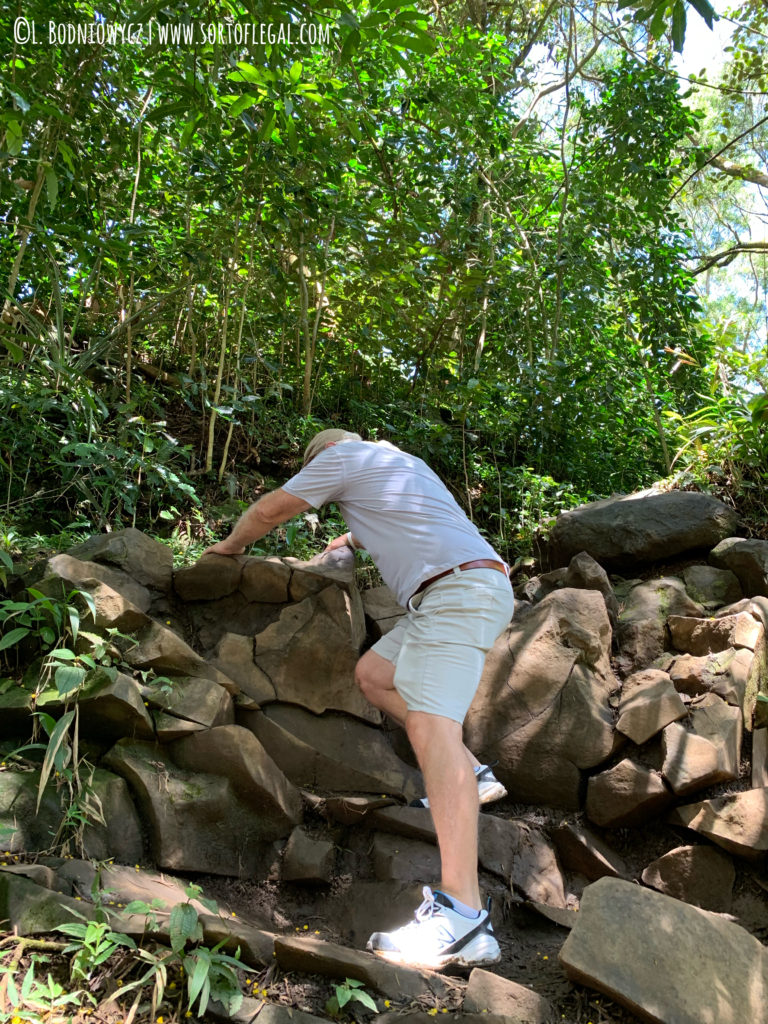
Dad doing a little scrambling
The falls are actually on private property that the owners generously allow people to use and even provide port-o-potty’s for free. Support them by keeping it clean and buying a snack at the stand or throwing a few dollars in the collection tins. The full history is worth a read, and can be found here.
Depending on ages and family member’s attention spans, you can continue and do the full Road to Hana. We opted not to spend a full day in the car and left it for some unknown “next time.” One middle ground option is to book lodging near the start of the Road to Hana rather than the coast or stay at one of the hotels in Hana(warning: limited and $$$$) to cut off some drive time and make it a more relaxed adventure or to
How to Get to Twin Falls:
There’s an actual street address for this one: 6300 Hana Hwy, Haiku, HI 96708. It’s also easy to find my name via your phone’s navigation system(Google maps link). It’s another where you are likely to lose or have reduced service on the way, but by the time you’ve lost service all you have to do is drive straight and keep your eyes peeled. When you see the first section of a bunch of cars parked on the side of the road, you’ve likely reached Twin Falls.
Tips for Visiting Twin Falls:
- Drive extremely carefully when you get close because there will be a lot of cars parked and people on the road walking to the Twin Falls entrance
- Enjoy a snack or ice pop with sugar cane stick from the Farm Stand at the entrance
- Access is free but its good karma to donate a few dollars to help maintain the spot (port-a-potties alone cost almost $10k a year!)
- When in doubt, don’t do it. If you’re unsure if the water is crossable or deep enough to jump into or of your own physical abilities, don’t jump, cross, or climb!
- Contrary to a lot of hikes, try this one later in the day as most people doing the full Road to Hana stop there in the morning.
Helpful Links for Planning:
Twin Falls at Wailele Farm
All Trails: Twin Falls, Maui, Hawaii
No. 5: KAPALUA COASTAL TRAIL
Kapalua Coastal Trail, Kapalua, Hawaii 96761, USA
The Kapalua Coastal Trail is a 3 – 4 mile round trip scenic trail along the coast in close proximity to Maui’s western resort areas of Kanapaali and Lahaina and right at the Kapalua resort areas. This one is top notch as far as amount of effort (minimal) required and driving (minimal) required for breathtaking, quintessential Hawaii views.
There’s surfing, rock jumping, and snorkeling spots along the trail if your family needs more outdoor adventure. We did the Kapalua Coastal trail on the same day as the Nakalele Blow hole which was efficient from a driving perspective, and gave sometimes antsy me, enough outdoor exercise.
Getting to Kapalua Coastal Trail:
Easy to navigate to and you should have service the whole way (unusual for quite a few other adventures on Maui). Easiest to navigate to one of the parking areas. Here are the Google map links: Parking Area 1& Parking Area 2.
Tips for Visiting Kapalua Coastal Trail:
- Sunscreen up and go early. This section of coastal Maui gets sunny and hot during mid-day.
- Parking fills up quickly.
- There are multiple parking areas (Google map link to Parking 1; Google map link to parking 2) but they fill-up quickly.
- Keep an eye on kids. The trail itself is pretty safe and easy but there are hazards like Cliffs and rough seas off sections of it.
- If part of the family doesn’t want to walk as far as the other part,
Helpful Links for Planning:
All Trails: Kapalua Coastal Trail
Kapalua Resort: Hiking Trails
As usual my go to pack for these adventures was my trusty CamelBak (has a lifetime guarantee and it is holding up!) & my cameras of choice my CanonRebelt6 (and my iPhone.
